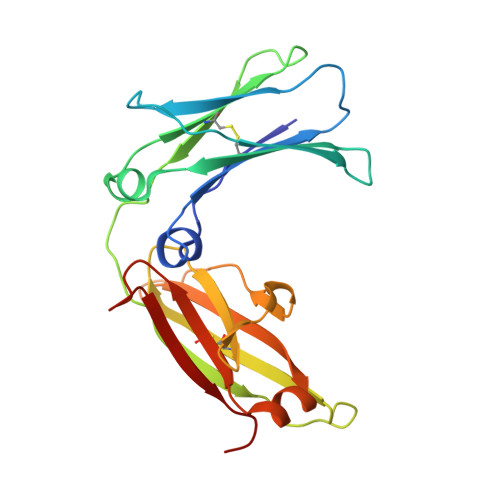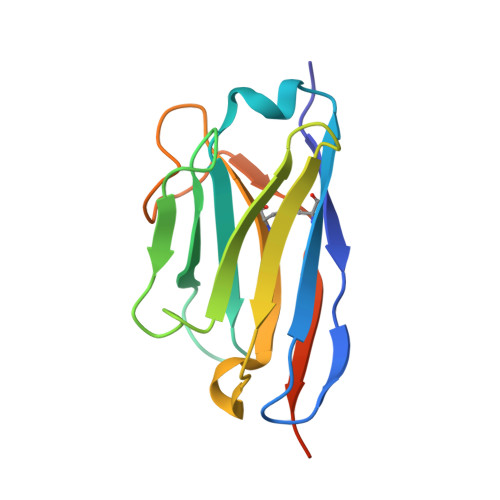Trapping IgE in a closed conformation by mimicking CD23 binding prevents and disrupts Fc epsilon RI interaction.
Jabs, F., Plum, M., Laursen, N.S., Jensen, R.K., Molgaard, B., Miehe, M., Mandolesi, M., Rauber, M.M., Pfutzner, W., Jakob, T., Mobs, C., Andersen, G.R., Spillner, E.(2018) Nat Commun 9: 7-7
- PubMed: 29295972
- DOI: https://doi.org/10.1038/s41467-017-02312-7
- Primary Citation of Related Structures:
5NQW - PubMed Abstract:
Anti-IgE therapeutics interfere with the ability of IgE to bind to its receptors on effector cells. Here we report the crystal structure of an anti-IgE single-domain antibody in complex with an IgE Fc fragment, revealing how the antibody inhibits interactions between IgE and the two receptors FcεRI and CD23. The epitope overlaps only slightly with the FcεRI-binding site but significantly with the CD23-binding site. Solution scattering studies of the IgE Fc reveal that antibody binding induces a half-bent conformation in between the well-known bent and extended IgE Fc conformations. The antibody acts as functional homolog of CD23 and induces a closed conformation of IgE Fc incompatible with FcεRI binding. Notably the antibody displaces IgE from both CD23 and FcεRI, and abrogates allergen-mediated basophil activation and facilitated allergen binding. The inhibitory mechanism might facilitate strategies for the future development of anti-IgE therapeutics for treatment of allergic diseases.
- Immunological Engineering, Department of Engineering, Aarhus University, 8000, Aarhus, Denmark.
Organizational Affiliation:



















